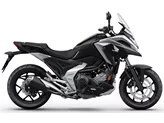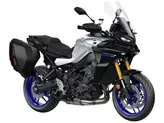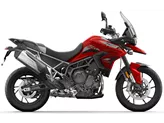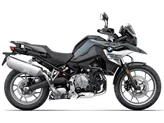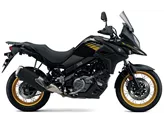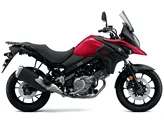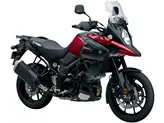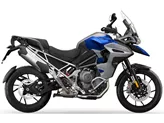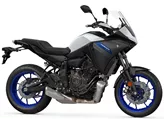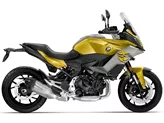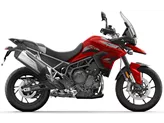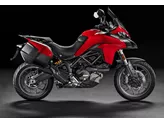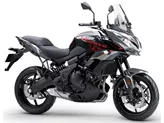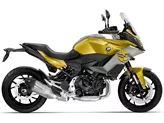Triumph Tiger 900 GT Pro 2020 vs. Suzuki V-Strom 650 2017
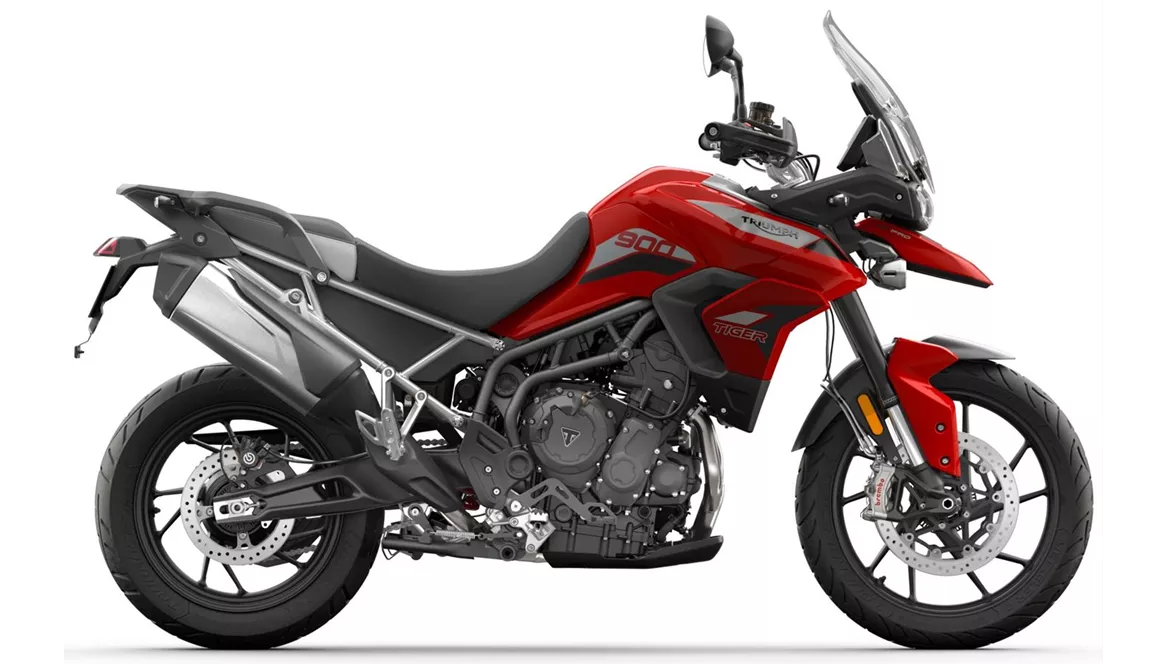
Triumph Tiger 900 GT Pro 2020

Suzuki V-Strom 650 2017
Overview - Triumph Tiger 900 GT Pro 2020 vs Suzuki V-Strom 650 2017
In terms of engine and drive train, the Triumph Tiger 900 GT Pro 2020 features an in-line three-cylinder engine with a displacement of 888cc. It delivers a powerful engine power of 95.2 HP and a torque of 87 Nm. The engine is started electrically and the power is transmitted through a chain transmission. On the other hand, the Suzuki V-Strom 650 2017 is equipped with a V-twin engine with a displacement of 645cc. It produces a slightly lower engine power of 71 HP and a torque of 62 Nm. The engine is also started electrically and the power is transmitted through a chain transmission.
In terms of suspension, the Triumph Tiger 900 GT Pro 2020 features an upside-down telescopic fork with a diameter of 45 mm at the front, providing a travel of 180 mm. The suspension can be adjusted for compression and rebound. At the rear, it has a swing arm suspension with a monoshock, offering a travel of 170 mm. The suspension can be adjusted for preload and rebound. On the other hand, the Suzuki V-Strom 650 2017 is equipped with a telescopic fork with a diameter of 43 mm at the front, providing a travel of 150 mm. The suspension can be adjusted for preload. At the rear, it has a swing arm suspension with a monoshock, offering a travel of 159 mm. The suspension can be adjusted for preload.
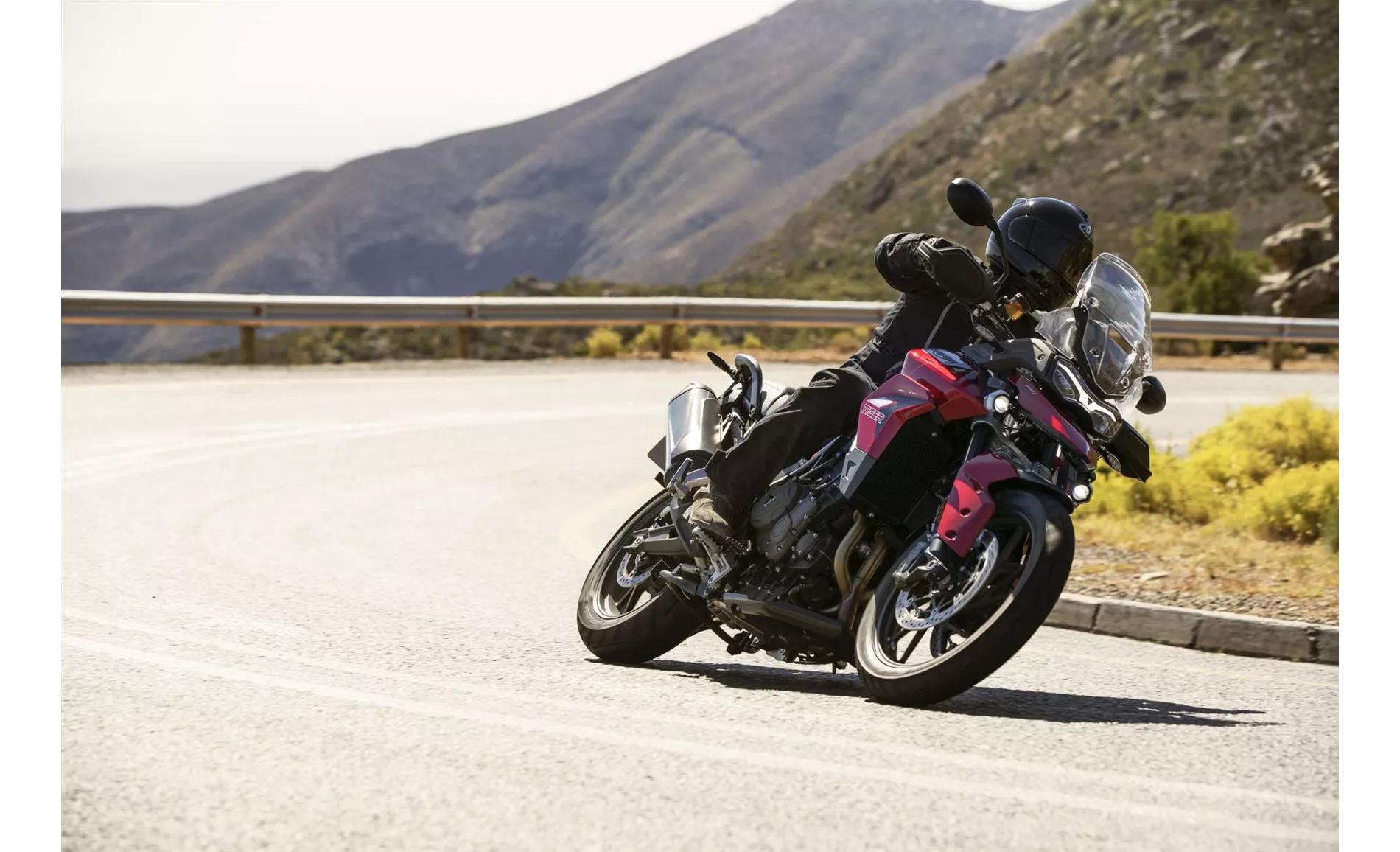
Triumph Tiger 900 GT Pro 2020
In terms of chassis, the Triumph Tiger 900 GT Pro 2020 features a steel frame with a tubular design. It has a rake of 65.4 degrees and a trail of 133.3 mm. On the other hand, the Suzuki V-Strom 650 2017 features an aluminum frame with a twin tube design. It has a slightly smaller rake of 64 degrees and a trail of 110 mm.
In terms of brakes, both motorcycles are equipped with double disk brakes at the front. However, the Triumph Tiger 900 GT Pro 2020 also offers advanced rider assistance systems such as suspension electronically adjustable, riding modes, cornering ABS, ride by wire, and traction control. The Suzuki V-Strom 650 2017, on the other hand, only offers ABS as a standard advanced rider assistance system.
In terms of dimensions and weights, both motorcycles have a front tire diameter of 19 inches and a rear tire width of 150 mm with a rear tire diameter of 17 inches. The Triumph Tiger 900 GT Pro 2020 has a wheelbase of 1556 mm and a seat height of 810 mm. It also has a fuel tank capacity of 20 liters. The Suzuki V-Strom 650 2017 has a slightly longer wheelbase of 1560 mm and a higher seat height of 830 mm. It also has a fuel tank capacity of 20 liters.

Suzuki V-Strom 650 2017
In terms of strengths, the Triumph Tiger 900 GT Pro 2020 stands out with its three-cylinder engine that is full of character, agile turn-in behavior, quickshifter as standard, electronically adjustable suspension strut, generous standard equipment, good ergonomics, good wind and weather protection, and long-distance capability. On the other hand, the Suzuki V-Strom 650 2017 is praised for its lively and economical engine, balanced handling, good wind protection, traction control and ABS as standard, stylish design resembling its bigger sister, extensive instrumentation with a gear indicator, 12-volt socket in the cockpit area, and a good price.
However, the Triumph Tiger 900 GT Pro 2020 does have a weakness in the form of a flood of switches on the left handlebar. On the other hand, the Suzuki V-Strom 650 2017 has a weakness in its traction control mode 2, which is considered to be very restrictive.
Technical Specifications Triumph Tiger 900 GT Pro 2020 compared to Suzuki V-Strom 650 2017
Pros and Cons in comparison
Pros and Cons in comparison
Triumph Tiger 900 GT Pro 2020
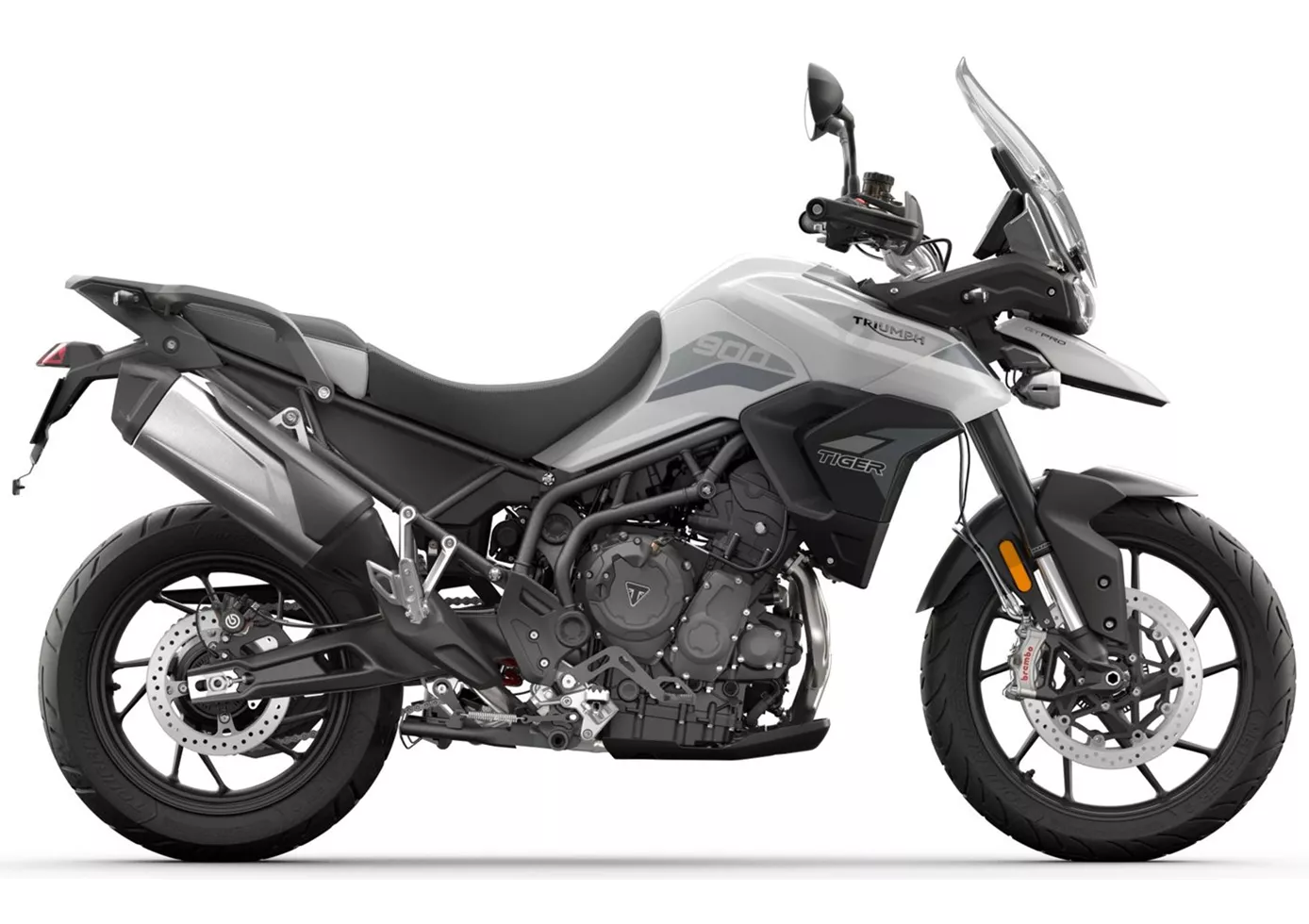
Good things take time, they say. Triumph has kept to this and with the Tiger 900 GT Pro has put a motorbike on the cast rims that continues the long, successful path of the 800 with many detail improvements and is just as much a practical everyday motorbike as it is for extended tours and trips. The Triple has become sharper and yet is still a harmonious unit with which even beginners can do no wrong without boring the experienced motorcyclist. And that's thanks to sufficient suspension travel on roads of the most varied qualities as well as quite moderate off-road passages. There was little to complain about in our first impression, but we will certainly take a closer look at the Tiger.
Suzuki V-Strom 650 2017

The small V-Strom 650 is not only visually close to the big V-Strom 1000 with its pronounced duckbill, stacked headlights and extensive instruments. The equipment does not correspond at all to what is understood by "cheap entry": traction control, lively Euro4 engine, harmonious handling and additional techno-gadgets such as Low RPM Assist or Suzuki Easy Start System. To the delight of the customers, the price is kept within reasonable limits.
Price Comparison Avarage Market Price Triumph Tiger 900 GT Pro vs Suzuki V-Strom 650
There are a few key differences between a Triumph Tiger 900 GT Pro 2020 and a Suzuki V-Strom 650 2017. In terms of price, the actual average price of a Triumph Tiger 900 GT Pro 2020 is about 52% higher. Compared to Suzuki V-Strom 650 2017 there are more Triumph Tiger 900 GT Pro 2020 bikes available on the 1000PS.de Marketplace, specifically 5 compared to 4. It takes less time to sell a Triumph Tiger 900 GT Pro with 88 days compared to 89 days for a Suzuki V-Strom 650. Since model year 2020 1000PS.de editors have written 10 reviews for the Triumph Tiger 900 GT Pro and 38 reviews for the Suzuki V-Strom 650 since model year 2005. The first review for the Triumph Tiger 900 GT Pro was published on 12/3/2019 and now has more than 65,300 views. This compares to more than 4,000 views for the first review on Suzuki V-Strom 650 published on 9/16/2003.


